150 Medicinal Plants & Herbs
Today, I am excited to delve into the fascinating world of plant medicines, a topic near and dear to my heart as I am a passionate advocate and avid user of these natural remedies. Through my own personal experiences and research, I have discovered the incredible healing powers and benefits that plant medicines have to offer. Join me as I explore the wonders of these ancient remedies and share the profound impact they have had on my well-being and overall health.
The power of medicinal plants cannot be underestimated when it comes to addressing everyday health issues. Whether you're suffering from a headache, stomach ache, or annoying bug bite, having certain medicinal plants on hand can provide much-needed relief. From brewing a soothing tea to using a plant as a natural garnish, applying essential oils topically, or even taking a plant-based supplement, the options for incorporating these healing agents into your daily routine are endless.
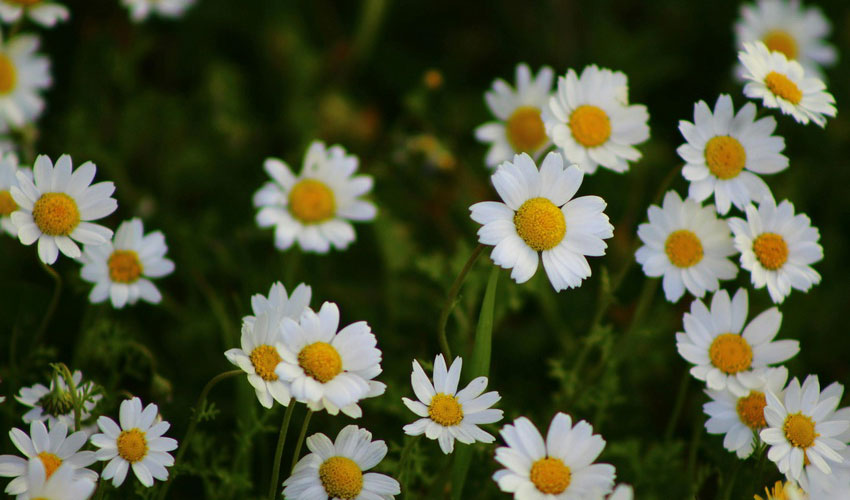
However, it is crucial to exercise caution and seek advice from a healthcare professional before introducing any new plant-based remedies into your regimen. Your doctor's expertise can ensure that you are making safe and effective choices for your health. By harnessing the power of medicinal plants responsibly, you can tap into their natural healing properties and enhance your overall well-being.
Throughout history, plants have been our silent healers, providing comfort and relief to our earliest ancestors. From healing wounds to curing diseases and soothing troubled minds, plants have always been by our side. It is fascinating to discover that as far back as 60,000 years ago, our ancestors were already utilising the power of plants for medicinal purposes. One remarkable piece of evidence comes from the discovery of a Neanderthal burial site in 1960. Among the remains was found a collection of 8 plant species, some of which are still commonly used in medicine today. This ancient practice of using plants for healing has stood the test of time and continues to be a valuable resource in our modern world.
If you are inspired to grow some of these ancient healing plants, it is essential to do so with care and respect. Be sure to follow the plant's care guidelines meticulously and avoid using any pesticides or harmful chemicals that could compromise their healing properties. By embracing these ancient plant remedies, we can connect with our roots and honour the wisdom of our ancestors who first discovered the power of nature's medicine.
List of Medicinal Plants & Uses
- Abscess Root (Polemonium reptans): It serves as a remedy for lowering fever, alleviating inflammation, and soothing coughs.
- Acai (Euterpe oleracea): While Acai Berries have been a vital nutritional staple for the indigenous peoples of the Amazon for centuries, historical records show no indication that they were used for medicinal purposes. Despite their surge in popularity in the United States as a trendy food supplement, current research does not support claims of their efficacy for any health-related benefits.
- Alder Buckthorn (Frangula alnus): The bark, along with its fruit, holds a traditional reputation as a powerful laxative, thanks to its 3-7% anthraquinone content. For medicinal purposes, the bark must be dried and aged for a year before it can be safely used, as fresh bark is known for its violently purgative effects. Even the dried bark can pose health risks if consumed in excess, highlighting the need for caution in its use.
- Alfalfa (Medicago sativa): Alfalfa leaves have long been recognised for their potential health benefits, particularly in addressing issues related to cholesterol levels and supporting kidney and urinary tract health.

- Aloe Vera (Aloe vera): Aloe Vera leaves have long been celebrated for their remarkable healing properties, serving as nature’s remedy for a variety of skin issues, including burns, wounds, and other ailments. With their succulent, gel-filled interiors, these leaves offer a soothing touch that not only alleviates pain but also accelerates the skin's natural healing process. From sunburn relief to the treatment of minor cuts, Aloe Vera is a trusted ally in promoting skin health and rejuvenation. Its rich blend of vitamins, minerals, and antioxidants provides nourishment to damaged skin, making it a beloved choice in both herbal medicine and modern skincare.
- Amargo, Bitter-Wood (Quassia amara): A groundbreaking study conducted in 2012 uncovered promising results regarding the treatment of rosacea. Researchers found that a topical gel containing 4% Quassia extract emerged as a safe and effective solution for managing this often stubborn and uncomfortable skin condition. The findings open new doors for those seeking relief from the chronic redness and irritation associated with rosacea, offering hope for a more natural approach to skincare. This innovative treatment not only demonstrates efficacy but also prioritises safety, setting a new standard in the pursuit of effective remedies for sensitive skin.
- Arnica (Arnica montana): Arnica is primarily applied topically in the form of creams, gels, and ointments to help relieve pain and reduce bruising, sprains, and muscle aches. It is also used to promote healing after injuries and surgeries. However, it should not be applied to broken skin or open wounds, as it can cause irritation. In addition to topical applications, Arnica is sometimes used in homeopathic remedies, but it's essential to consult a healthcare professional before using it, especially if you are pregnant, nursing, or have underlying health conditions. While many people report positive effects from Arnica, scientific evidence is mixed regarding its efficacy, and it is important to use it cautiously.
- Asafoetida (Ferula assa-foetida): Asafoetida, a unique and intriguing spice often used in various culinary traditions, holds potential benefits for several health concerns, including Irritable Bowel Syndrome (IBS), elevated cholesterol levels, and respiratory issues. Renowned not just for its distinctive flavour that enhances dishes but also for its medicinal properties, Asafoetida may serve as a natural ally for those seeking relief from digestive discomfort, heart health challenges, and breathing difficulties. When exploring its role in managing IBS, this potent spice may support gut health by alleviating bloating and gas, contributing to a more balanced digestive system. Additionally, research suggests that Asafoetida could play a role in lowering cholesterol levels, promoting cardiovascular wellness and helping maintain a healthier lipid profile. Moreover, its potential benefits extend to the respiratory system, where Asafoetida may provide soothing relief for breathing problems, possibly due to its anti-inflammatory properties. With its remarkable range of effects, Asafoetida stands out as a valuable natural remedy, making it worthy of consideration for those navigating these health issues.
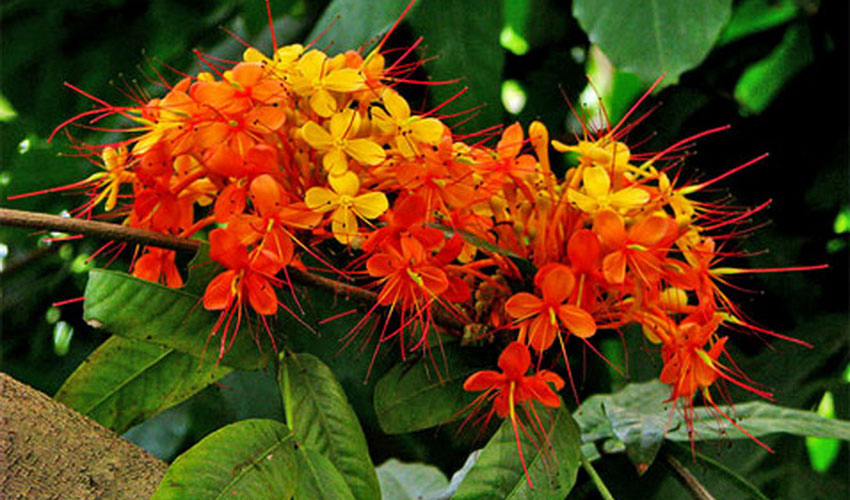
- Ashoka Tree (Saraca indica): It is known for its beautiful and fragrant orange-yellow flowers that bloom in clusters. The tree is considered sacred in Hinduism and Buddhism, and is often planted in temple gardens and near religious sites. The Ashoka Tree is also known for its medicinal properties. Various parts of the tree, including the bark, leaves, and flowers, are used in traditional Ayurvedic medicine to treat various ailments such as diarrhoea, dysentery, and menstrual disorders. In addition to its medicinal and religious significance, the Ashoka Tree is often planted for its ornamental value in gardens and parks. Its graceful canopy, attractive foliage, and colourful flowers make it a popular choice for landscaping in tropical and subtropical regions.
- Ashwagandha (Withania somnifera): The remarkable Ashwagandha plant, distinguished by its distinctive long, brown tuberous roots, has been a cornerstone of traditional medicine for centuries. Revered in the ancient practice of Ayurveda, every part of the Ashwagandha plant is seen as a treasure trove of healing properties. The berries and leaves, in particular, hold significant therapeutic potential; they are often employed in topical applications to combat various ailments. When applied externally, these natural remedies are believed to effectively address issues such as tumours, tubercular glands, carbuncles, and ulcers. The root of the Ashwagandha plant is believed to have various health benefits, including reducing stress and anxiety, improving cognitive function, boosting energy levels, and supporting immune function. This holistic approach underscores the profound respect and understanding that Ayurveda offers to the nuances of natural healing, drawing on nature's bounty to promote health and wellbeing.
- Asthma-Plant (Euphorbia hirta): The Asthma Plant, steeped in centuries of traditional medicine across Asia, has garnered a reputation for its remarkable ability to alleviate bronchi tic asthma and provide relief from laryngeal spasms. This resilient herbal remedy is not only an essential part of respiratory health management in various Asian cultures; it also plays a significant role in the Philippines, where it is employed as a natural treatment for the symptoms associated with dengue fever. With its multifaceted uses, the Asthma Plant embodies a rich legacy of healing, blending cultural wisdom with therapeutic potential to address some of the most challenging ailments faced by communities throughout the region.
- Astragalus (Astragalus propinquus): Astragalus has long been celebrated for its medicinal properties, making it a cornerstone in traditional herbal remedies. Its potent decoctions have been employed to combat a variety of ailments, including fevers, diabetes, urinary tract disorders, and even stubborn cases of constipation. Astragalus root extract is known for its immune-boosting properties, as it contains antioxidants and anti-inflammatory compounds that can help protect the body against infections and diseases. Additionally, it has been used to help improve heart health, aid in digestion, and reduce stress and fatigue. Beyond its roots, the leaves of the Astragalus plant offer a natural solution for promoting digestive health, acting as an effective laxative. The dried flowers and flower buds of Astragalus present another remarkable benefit, serving as an excellent herbal alternative to regular tea, especially for those managing diabetes. This natural infusion can provide both comfort and support to those seeking to regulate their blood sugar levels. Moreover, the therapeutic applications of Astragalus extend to its powdered seeds, which can be used topically to treat chronic purulent conjunctivitis, addressing this eye condition with a gentle, yet effective herbal remedy.
- Avaram Senna (Senna auriculata): The root of this remarkable plant is steeped in traditional remedies, prized for its efficacy in decoctions that combat fevers, manage diabetes, alleviate urinary disorders, and relieve constipation. The leaves possess natural laxative properties, promoting digestive health. In a clever twist, the dried flowers and flower buds serve as a delightful tea alternative for those living with diabetes.

- Barberry (Berberis vulgaris): Barberry boasts a rich legacy of medicinal use that stretches back to the Middle Ages, especially among Native American cultures. This remarkable herb has been valued for its healing properties, traditionally employed to treat a range of conditions, including skin ailments, scurvy, and various gastrointestinal disorders. Its enduring role in herbal medicine speaks to the timeless wisdom of natural healing practices.
- Bay Laurel (Laurus nobilis): Aqueous extracts of Bay Laurel offer a natural astringent and are effective as a soothing salve for open wounds. In the realm of massage therapy, the essential oil of Bay Laurel is celebrated for its potential to relieve arthritis and rheumatism. Additionally, in aromatherapy, it serves as a remedy for earaches and high blood pressure, showcasing its versatile therapeutic properties.
- Belladonna (Atropa belladonna): Despite its toxic properties, Belladonna had a fascinating history in Italy, where women famously used it to enhance their pupils and create a captivating gaze. Its name, which translates to "beautiful woman" in Italian, reflects the allure associated with this intriguing plant, once sought after for its various uses, including as a sedative.
- Bilberry (Vaccinium myrtillus): Bilberries are often associated with improved vision, particularly night vision. They contain compounds called anthocyanins, which are believed to enhance circulation in the capillaries of the eyes, potentially reducing symptoms of visual fatigue and improving overall eye health. The high levels of antioxidants in Bilberries, particularly anthocyanins, can help combat oxidative stress and reduce inflammation throughout the body. This may support general health and reduce the risk of chronic diseases.
- Bitter Leaf (Vernonia amygdalina): Both primates and indigenous communities in Africa harness the power of this plant to combat intestinal disorders like dysentery, showcasing its vital role in traditional medicine.
- Bitter Melon (Momordica charantia): Bitter lemons are not commonly found in mainstream markets compared to their sweeter counterparts. The bitterness comes from higher levels of certain compounds present in the fruit's skin and pulp. While the bitter flavour may not make them desirable for eating raw, they can be used in cooking, beverages, and cocktails or for making preserves. They are sometimes used in culinary dishes to add a complex flavour profile or in traditional remedies. In addition to the taste, Bitter Lemons, like other citrus fruits, are rich in vitamin C and contain other beneficial nutrients, making them a healthy option when included in various recipes. The plant is also used as an agent to decrease blood glucose levels.
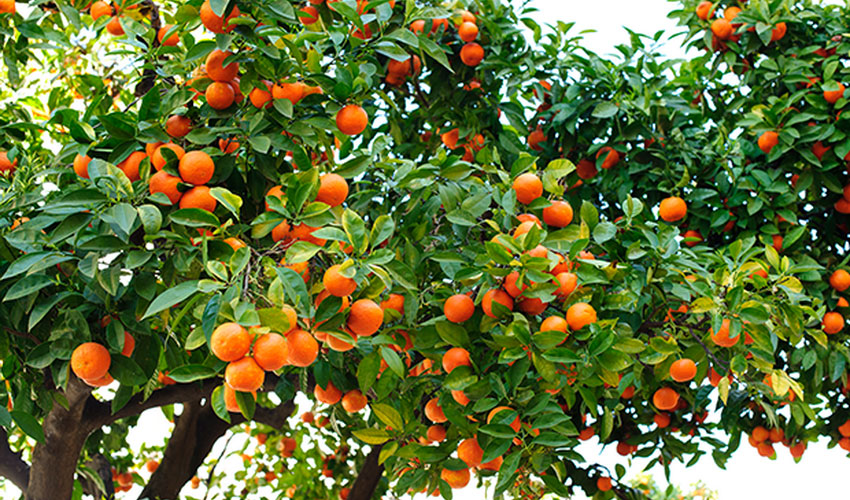
- Bitter Orange (Citrus × aurantium): Bitter Orange has long been valued in traditional Chinese medicine and among indigenous communities of the Amazon for its remarkable ability to alleviate nausea, indigestion, and constipation.
- Black Cohosh (Actaea racemosa): Black Cohosh has a rich history of being utilised for alleviating arthritis and muscle pain. In recent years, it has gained recognition for its effectiveness in addressing symptoms associated with menopause and menstruation, offering relief and support during these natural life transitions.
- Blessed Thistle (Cnicus benedictus): In the Middle Ages, Blessed Thistle served as a crucial remedy against the devastating bubonic plague. Today, this remarkable herb has found its place in modern wellness, with herbal teas crafted from blessed thistle offering relief for loss of appetite, indigestion, and various other health concerns.
- Blue Snakeweed (Stachytarpheta cayennensis): Extracts from this remarkable plant serve as a natural remedy for alleviating malaria symptoms. Consuming a boiled juice or tea made from the leaves or the entire plant provides relief from fever and various associated ailments. Additionally, it is known to combat dysentery, alleviate pain, and support liver health. In regions like Peru, a tea brewed from its leaves is traditionally used to help regulate diabetes. Scientific studies bolster these claims, revealing the plant's potent anti-inflammatory properties.
- Borage (Borago officinalis): Utilised for a range of hyperactive disorders affecting the gastrointestinal, respiratory, and cardiovascular systems, this treatment addresses issues such as gastrointestinal discomfort (colic, cramps, and diarrhoea), respiratory conditions (asthma and bronchitis), and cardiovascular concerns (acting as a cardio-tonic, antihypertensive, and blood purifier). It also supports urinary health by serving as a diuretic and alleviating kidney and bladder disorders.
- Burdock (Arctium lappa): Traditionally valued for its diuretic properties and its ability to help regulate blood sugar levels, this remedy has also been a staple in traditional Chinese medicine, where it is employed to soothe sore throats and alleviate symptoms of the common cold.
- Californian Poppy (Eschscholzia californica): Utilised as a natural remedy, an aqueous extract of the plant offers soothing sedative and anxiety-relieving effects. Californian Poppy tea is believed to have calming and relaxing effects, making it a popular choice for promoting sleep, reducing anxiety, and easing tension. It is also sometimes used as a natural remedy for pain relief, particularly for conditions such as muscle soreness, menstrual cramps, and headaches.
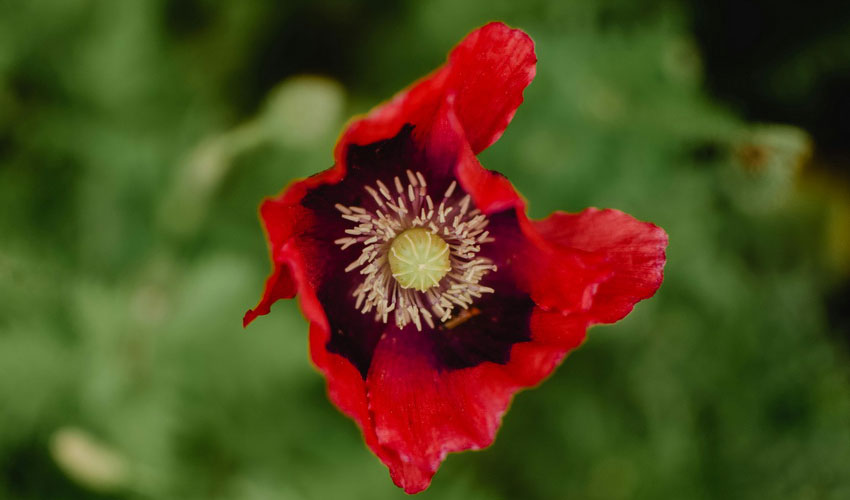
- Cannabis (Cannabis sativa): Harnessed for centuries across the globe, this versatile remedy has been a trusted treatment for a wide array of conditions and ailments. From alleviating pain and inflammation to addressing gastrointestinal issues like IBS, it has provided relief for muscle tension, anxiety, and even cognitive challenges associated with Alzheimer's, dementia, ADHD, and autism. Additionally, its therapeutic properties extend to combating serious health conditions such as cancer, cerebral palsy, recurring headaches, Crohn's disease, depression, epilepsy, glaucoma, insomnia, and neuropathy, among many others.
- Cat's Claw (Uncaria tomentosa): Cat's Claw has been used for centuries in traditional medicine, particularly by Indigenous peoples of the Amazon region. It is known for its potential health benefits, which may include: Anti-inflammatory Properties, Digestive Health, Immune Support and Antioxidant Effects.
- Cayenne (Capsicum annuum): This remarkable type of chili has served as both a culinary delight and a potent medicinal remedy for millennia. Renowned for its ability to alleviate pain and reduce inflammation, it has also been shown to lower triglycerides and cholesterol levels effectively. Packed with an impressive amount of Vitamin C, it acts as a robust defender against viruses and harmful bacteria, showcasing its dual role as both a flavorful ingredient and a powerhouse of health benefits.
- Chamomile (Matricaria recutita & Anthemis nobilis): For millennia, Chamomile has been revered for its remarkable ability to soothe a myriad of ailments. From combatting sleepless nights and alleviating anxiety to easing gastrointestinal troubles like upset stomach, gas, and diarrhoea, this ancient herb has been a cherished companion in the pursuit of wellness.
- Chaparral (Larrea tridentate): Chaparral is a shrub native to the arid regions of the south-western United States and Mexico. It has been traditionally used for various medicinal purposes, particularly by indigenous peoples. It has been traditionally used for its potential antimicrobial effects. It's thought to help combat bacterial and fungal infections. When used as incense, Chaparral can create a calming and grounding atmosphere. It is often used in spiritual or meditative practices to enhance relaxation and introspection. As with any incense, it’s essential to use it in a well-ventilated area and ensure that there are no allergies or sensitivities to the plant.
- Charcoal-Tree (Trema orientalis): The leaves and bark are powerful remedies, effectively alleviating coughs, sore throats, asthma, and bronchitis. They also combat gonorrhoea, yellow fever, and toothaches, serving as a potent antidote for general poisoning.
- Chasteberry (Vitex agnus-castus): For millennia, this herbal remedy has been harnessed to address menstrual issues and promote lactation, standing the test of time as a trusted solution.
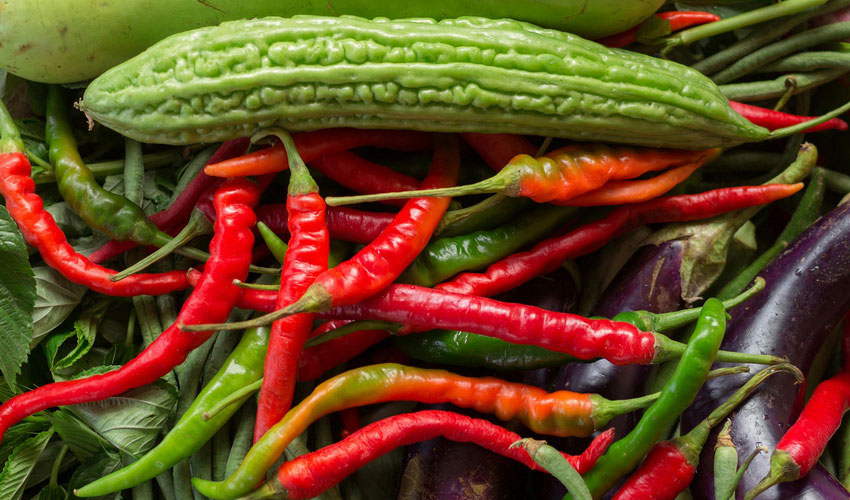
- Chilli (Capsicum frutescens): The active ingredient, capsaicin, serves as the cornerstone of many commercial pain-relief ointments in Western medicine. Interestingly, the low rates of heart attacks in Thailand may be linked to capsaicin's remarkable ability to dissolve blood clots through its fibrinolytic action.
- Cinchona (Cinchona spec.): Discover the remarkable genus of approximately 38 tree species renowned for their bark, which serves as a rich source of valuable alkaloids like quinine. This powerful compound gained prominence as a febrifuge in the 17th century, thanks to the pioneering efforts of Peruvian Jesuit missionaries who introduced its therapeutic properties to the world.
- Cinnamon Rose (Rosa majalis): It produces flavourful hip fruits bursting with vitamin C, valued for their medicinal properties and used to create delicious rose hip syrup.
- Clove (Syzygium aromaticum): This versatile plant serves multiple medicinal purposes, primarily helping to soothe upset stomachs and acting as an effective expectorant. Additionally, its oil is applied topically to provide relief from toothache, making it an invaluable resource in natural remedies.
- Coffee Senna (Cassia occidentalis): Widely revered in traditional medicine, it serves multiple purposes: acting as a powerful broad-spectrum antimicrobial for both internal and external use, addressing liver disorders, combatting intestinal worms and other parasites, and bolstering the immune system.
- Common Chickweed (Stellaria media): Historically revered for its healing properties, this ancient herb has long served as a remedy for a range of ailments, from itchy skin conditions to pulmonary diseases. In the 17th century, renowned herbalist John Gerard championed its use in treating mange. Today, contemporary herbalists continue to harness its benefits, prescribing it not only for iron-deficiency anaemia due to its rich iron content but also for an array of conditions including skin disorders, bronchitis, rheumatic pain, arthritis, and menstrual cramps. Its versatility makes it a treasured ally in holistic healing.
- Common Hepatica (Anemone hepatica): Traditionally recognised for its effectiveness in treating liver ailments, this herb continues to play a significant role in contemporary alternative medicine. Herbalists now harness its healing properties for a variety of modern health issues, including the management of acne, bronchitis, and gout.
- Common Hollyhock (Alcea rosea): Renowned for its soothing properties, this versatile remedy acts as both an emollient and a natural laxative. It provides relief by managing inflammation, curbing bedwetting, and serving as an effective mouthwash for treating bleeding gums.
- Common Mullein (Verbascum Thapsus): Common Mullein is brimming with powerful glycyrrhizin compounds known for their antibacterial properties and promising anti-tumour capabilities, particularly abundant in its delicate flowers.
- Common Nettle, Stinging Nettle (Urtica dioica): Stinging Nettle has long held a revered place in traditional Austrian medicine, where it is commonly utilised in the form of tea or fresh leaves to address a wide array of health concerns ranging from kidney and urinary tract issues to skin conditions, cardiovascular problems, and even the flu, rheumatism, and gout.
- Common Witch-Hazel (Hamamelis virginiana): This plant generates a unique class of tannins known as hamamelitannins, with one particular compound demonstrating targeted cytotoxic effects on colon cancer cells.
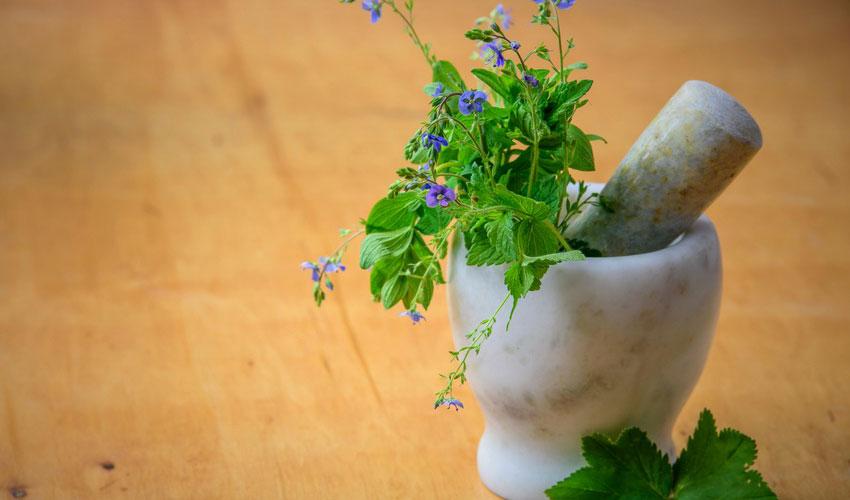
- Common Yarrow (Achillea millefolium): Claimed to possess diaphoretic, astringent, tonic, stimulant, and mild aromatic properties.
- Cornflower (Centaurea cyanus): In the world of herbalism, cornflower decoction proves to be a remedy for conjunctivitis and a refreshing wash for weary eyes, offering soothing relief and revitalisation.
- Cotton Lavender (Santolina chamaecyparissus): The flowers and leaves of Cotton Lavender are frequently transformed into a decoction, renowned for their ability to effectively eliminate intestinal parasites. This herbal remedy has been cherished for generations due to its natural properties, offering a holistic approach to promoting digestive health and vitality. By harnessing the power of Cotton Lavender, individuals seeking relief from parasitic infestations can benefit from a time-honoured tradition that intertwines nature's wisdom with wellness.
- Cranberry (Vaccinium macrocarpon): It was used historically as a vulnerary and for urinary disorders, diarrhoea, diabetes, stomach ailments, and liver problems. Modern usage has concentrated on urinary tract related problems.
- Curly Dock or Yellow Dock (Rumex crispus): In Western herbalism the root is often used for treating anaemia, due to its high level of iron. The plant will help with skin conditions if taken internally or applied externally to things like itching, scrofula, and sores. It is also used for respiratory conditions, specifically those with a tickling cough that is worse when exposed to cold air. It mentions also passing pains, excessive itching, and that it helps enlarged lymph’s.
- Daisy (Bellis perennis): Daisy flowers, celebrated in traditional Austrian medicine, have long been revered for their therapeutic properties. Whether brewed into a soothing tea or incorporated into salads with their delicate leaves, these vibrant blooms have served as a natural remedy for various ailments affecting the gastrointestinal and respiratory systems. Their gentle yet effective characteristics make them a beloved choice for those seeking holistic approaches to health and well-being.
- Dandelion (Taraxacum officinale): Dandelions offer a natural solution to many common ailments. Packed with antioxidants and various minerals, this unassuming root has been traditionally used for centuries to aid digestion, liver detoxification, and support healthy weight management. Its bold and earthy flavour adds a charming twist to herbal teas or even as a substitute for coffee – perfect for those who crave a healthier alternative!
- Digitalis or Foxglove (Digitalis lanata): Emerging in late 18th-century England, this treatment for cardiac disease was embraced despite its significant toxicity. However, over time, it has largely been supplanted by the pharmaceutical derivative Digoxin. With a shorter half-life, Digoxin offers a more manageable therapeutic profile, allowing for safer use in patients. Today, it serves as both an effective antiarrhythmic agent and a powerful inotrope, transforming the landscape of cardiac care.
- Dong Quai (Angelica sinensis): For millennia, Dong Quai has been revered in Asia as a cornerstone of women's health. This remarkable herb, often referred to as "female ginseng," has a rich history steeped in traditional medicine, where it has been utilized to support various aspects of women's well-being. With its deep roots in ancient herbal practices, Dong Quai is celebrated not just for its healing properties but also for its holistic approach to balancing the female body. Its legacy spans generations, making it a time-honoured ally in nurturing women's health.
- Drumstick Tree (Moringa oleifera): Celebrated for its dual role in both culinary delights and traditional healing practices. Renowned for its nutrient-rich leaves, pods, and seeds, this versatile tree has long been a staple in various cuisines, providing a rich source of vitamins, minerals, and protein. Beyond its nutritional value, the Drumstick Tree is steeped in a legacy of medicinal applications, where its various parts have been employed to treat ailments ranging from inflammation to nutritional deficiencies. Currently, scientific inquiry is embarking on groundbreaking preliminary research to unlock the full potential of this extraordinary tree. Scholars and researchers are delving into its complex array of nutrients and phytochemicals, aiming to uncover the mechanisms behind its health benefits. These studies hold the promise of revealing how the unique compounds found in the Drumstick Tree could contribute to improved well-being and even serve as a foundation for new therapeutic approaches.

- Elderberry (Sambucus nigra): For centuries, the powerful berries and leaves of the elderberry plant have been celebrated for their healing properties. Traditionally, they have been employed to alleviate pain, reduce swelling, combat infections, soothe coughs, and address various skin conditions. In modern times, their remarkable benefits extend even further, providing relief from ailments such as the flu, the common cold, fevers, constipation, and sinus infections. As far back as 400 BC, the esteemed physician Hippocrates hailed elderberry as “Nature’s Medicine Chest,” underscoring its enduring legacy in natural healing.
- Elecampane (Inula helenium): Elecampane is a herb steeped in traditional herbal medicine, is renowned for its powerful expectorant properties, helping to clear mucus and promote respiratory health. Additionally, this age-old plant has been valued for its ability to alleviate water retention, offering a natural solution for those seeking relief from this common concern. With its intriguing history and therapeutic benefits, Elecampane stands out as a versatile ally in the realm of holistic health, making it a staple in many herbal remedies aimed at supporting both respiratory function and fluid balance in the body.
- Eucalyptus (Eucalyptus globulus): Throughout history, Eucalyptus leaves have played a significant role in traditional healing practices, particularly valued for their ability to reduce fever and alleviate symptoms associated with various ailments. This potent plant has long been recognised for its therapeutic properties, making it a staple in folk remedies across cultures. Today, Eucalyptus oil continues to be a vital ingredient in many over-the-counter cough and cold medications. Renowned for its soothing and invigorating qualities, this essential oil is harnessed for its ability to alleviate respiratory discomfort and promote easier breathing. Additionally, eucalyptus oil serves as an effective analgesic, providing relief from pain and inflammation. Its versatile applications in modern medicine highlight the enduring legacy of eucalyptus as a powerful natural remedy. Whether soothing a cough or easing bodily aches, Eucalyptus remains a cherished ally in the pursuit of wellness.
- European Mistletoe (Viscum album): It has been used to treat headaches, seizures, and other health issues.
- Evening Primrose (Oenothera): Evening Primrose oil has a rich history that dates back to the 1930s, when it first emerged as a sought-after remedy for eczema. This remarkable oil, derived from the seeds of the Evening Primrose plant, has long captivated health enthusiasts with its unique properties. In recent times, it has gained recognition not only for its effectiveness in alleviating the symptoms of eczema but also for its powerful anti-inflammatory capabilities.
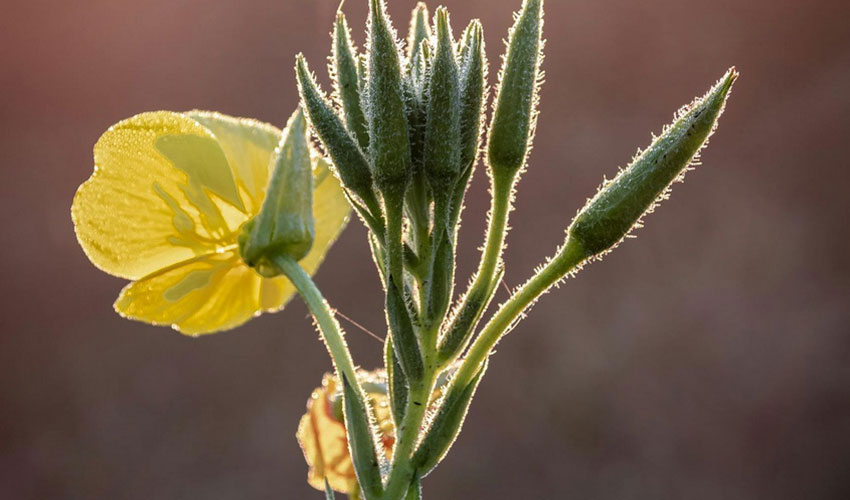
- False Sowthistle (Reichardia tingitana): False Sowthistle has a rich history in folkloric medicine, particularly in the Middle East, where its healing properties have been harnessed for generations. Traditional practices often involve using the plant’s leaves, which are believed to possess potent medicinal qualities. These leaves have been employed to alleviate a variety of health concerns, including digestive issues like constipation and colic, as well as soothing inflamed eyes.
- Fenugreek (Trigonella foenum-graecum): Fenugreek, a herb with a rich history in traditional medicine, has been celebrated for its efficacy in alleviating menopause symptoms and addressing various digestive issues. In contemporary times, its therapeutic repertoire has expanded, as it gains recognition for its potential benefits in managing diabetes, stimulating appetite, and addressing an array of other health concerns. With a legacy rooted in ancient healing practices, Fenugreek is now emerging as a versatile ally in the quest for holistic well-being.
- Feverfew (Tanacetum parthenium): This herb has been harnessed for centuries as a natural remedy for a wide array of ailments. From battling fevers to alleviating headaches, easing stomach discomfort, soothing toothaches, and alleviating the sting of insect bites, this versatile plant has earned its place in the annals of traditional medicine. Its longstanding reputation as a healer is a testament to its efficacy and the wisdom of those who have turned to it for relief through the ages. Whether it's the intricate balance of its active compounds or its holistic approach to wellness, feverfew continues to captivate the interest of herbal enthusiasts and health practitioners alike.
- Field Scabious (Knautia arvensis): The entire plant possesses potent astringent properties and acts as a gentle diuretic, making it a versatile addition to natural healing practices. When prepared as an infusion, it serves as an effective remedy for purifying the blood, helping to detoxify the body from within. Additionally, its external applications are invaluable; the infusion can be skilfully employed to treat various skin ailments such as cuts, burns, and bruises, promoting healing and reducing inflammation.
- Flaxseed (Linum usitatissimum): Flaxseed is primarily celebrated for its remarkable properties as a natural laxative, providing much-needed relief for those battling digestive challenges. Its rich fibre content promotes regular bowel movements, making it a go-to remedy for alleviating constipation and enhancing overall gut health. Beyond its digestive benefits, Flaxseed oil is harnessed for a variety of health conditions, including the management of arthritis. This potent oil is known for its anti-inflammatory properties, which can help reduce joint pain and stiffness, offering a natural alternative for those seeking to improve their mobility and quality of life.
- Fumitory (Fumaria officinalis): Historically revered for its benefits to eye health and its ability to diminish skin blemishes, fumitory has found a place in contemporary herbal medicine as a treatment for skin disorders and conjunctivitis, as well as a cleansing agent for the kidneys. However, caution is essential: Howard (1987) cautions that fumitory is toxic and should only be used under the careful guidance of a qualified medical herbalist.
- Garden Angelica (Angelica archangelica): Garden Angelica Roots, a cherished gem in the world of traditional Austrian medicine, have long been revered for their remarkable health benefits. This versatile herb has found its place in various forms, notably as a soothing tea or a potent tincture, harnessing the power of nature to address a myriad of health concerns. For centuries, healers have relied on Garden Angelica Roots to provide relief for ailments affecting the gastrointestinal tract, helping to soothe digestive disturbances and promote overall gut health. Beyond the digestive system, this extraordinary herb has also been employed to support the respiratory tract, offering comfort for those grappling with colds, coughs, or other respiratory issues. Moreover, Garden Angelica is celebrated for its effects on the nervous system, known to calm the mind and alleviate stress, creating a sense of peace and well-being. As a natural remedy, it also boasts properties that combat fevers and infections, making it a valuable ally in times of illness, particularly during pesky bouts of the flu.
- Garlic (Allium sativum): Garlic, a staple in kitchens around the world, has long been celebrated not only for its culinary qualities but also for its remarkable healing properties. Traditionally recognised as a powerful antibiotic, Garlic has now gained attention for its potential role in treating various cardiovascular ailments, showcasing its versatility as a natural remedy. Moreover, emerging research indicates that Garlic functions as a monoamine oxidase inhibitor, suggesting it may possess significant antidepressant-like effects, at least in mouse models. This intriguing finding opens the door to the possibility of Garlic being utilised as a herbal treatment for depression and anxiety in humans, offering an accessible and natural alternative to conventional medications.
- Ginger (Zingiber officinale): Ginger is well-known for its ability to aid in digestion. It can help alleviate nausea, including motion sickness and morning sickness during pregnancy. Ginger tea is often recommended to soothe the stomach and reduce bloating and gas. Ginger Root contains bioactive compounds such as gingerol, which possess powerful anti-inflammatory effects. This can be beneficial for individuals with inflammatory conditions, such as arthritis, helping to reduce pain and enhance joint mobility. Some studies indicate that Ginger may have a positive impact on heart health by reducing cholesterol levels and improving blood circulation. This can potentially lower the risk of cardiovascular diseases. Emerging research suggests that Ginger may play a role in regulating blood sugar levels and improving insulin sensitivity, which could be particularly beneficial for individuals with type 2 diabetes. The root also has been studied for its potential role in cancer prevention. Some laboratory studies indicate that Ginger extract may inhibit the growth of certain cancer cells, though more research is needed to fully understand its effects.
- Ginkgo (Ginkgo biloba): Ginkgo leaf extract has garnered significant attention for its potential therapeutic benefits in a variety of health conditions. With roots tracing back to traditional medicine, this remarkable extract has emerged as a popular natural remedy for ailments such as asthma, bronchitis, chronic fatigue, Alzheimer's disease, and tinnitus. Regarding mental health, Ginkgo leaf extract is being studied for its promising effects on cognitive function, particularly in individuals facing the challenges of Alzheimer’s disease. By promoting better blood circulation to the brain, it may support memory and cognitive clarity, offering hope for those affected by dementia-related conditions. Additionally, Ginkgo’s invigorating properties could provide a natural solution for those grappling with persistent fatigue. This extract may help to boost energy levels, enhance stamina, and elevate overall vitality, encouraging individuals to reclaim their zest for life.
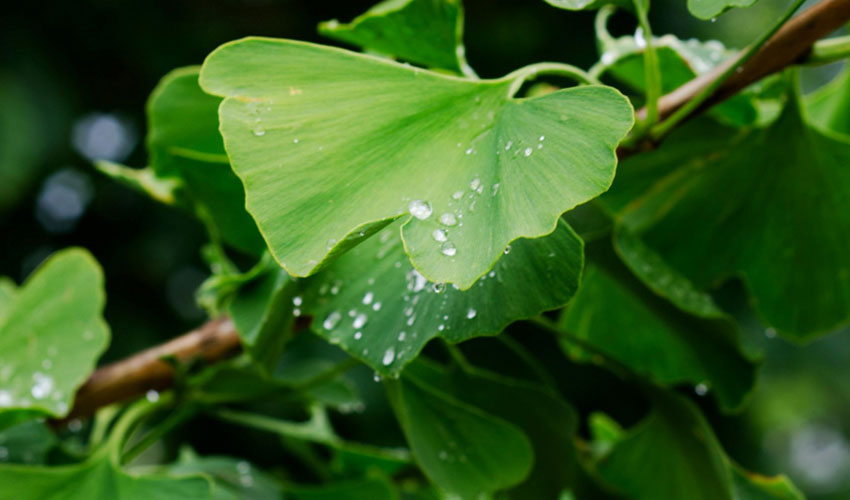
- Ginseng (Panax spec.): For more than two millennia, Ginseng has been revered for its remarkable medicinal properties, especially within the rich tapestry of Asian traditional medicine. This ancient herbal remedy, known for its vitality-enhancing effects, has transcended time and culture to secure a prominent place in contemporary wellness practices across the globe. With an increasingly health-conscious society, Ginseng's unique benefits continue to captivate the modern world, cementing its status not just as a relic of ancient healing, but as a vital component of today’s holistic health approaches. From boosting energy levels to enhancing cognitive function, Ginseng remains a powerful ally in the quest for optimal well-being, bridging the wisdom of the past with the needs of the present.
- Goldenseal (Hydrastis Canadensis): Goldenseal, a revered herb with deep roots in Native American healing traditions, has a rich history as a powerful natural remedy. Indigenous peoples utilised this potent plant to address a variety of health issues, including skin ailments, stubborn ulcers, and the bacterial infection gonorrhoea. Its remarkable properties made it a cornerstone of their medicinal practices, showcasing the profound connection between nature and healing. In contemporary times, the applications of Goldenseal have expanded beyond its original uses. This versatile herb is now recognised for its efficacy in supporting respiratory health, helping to alleviate ailments affecting the respiratory tract. Additionally, goldenseal is increasingly utilised in the treatment of various infections, underscoring its ongoing relevance in the field of herbal medicine. As we continue to explore the potential benefits of Goldenseal, its historical significance and contemporary applications exemplify the enduring legacy of natural remedies in promoting wellness.
- Grape (Vitis vinifera): Since the time of the ancient Greeks, Grapes and their leaves have held significant medicinal value, revered not only for their delectable taste but also for their myriad health benefits. These humble fruits and their lush, green foliage were integral to the holistic practices of ancient healing, showcasing a deep-rooted understanding of nature's bounty. The Greeks recognised the rich properties of Grapes, employing them in various remedies to promote wellness and vitality. Today, we continue to uncover and celebrate their remarkable legacy, revealing how these timeless gifts of nature can contribute to our health and well-being.
- Ground-Ivy (Glechoma hederacea): Ground-Ivy, often referred to as the "lung herb," has a rich history of traditional medicinal applications. This remarkable plant has been utilised for its expectorant and astringent properties, making it a valuable ally in the treatment of bronchitis. For centuries, herbalists have turned to the essential oil extracted from Ground-Ivy as an effective, all-natural remedy for colds and coughs. Its versatility and potency make it a sought-after tonic, capable of providing much-needed relief during respiratory ailments. Ground-Ivy is particularly renowned for its ability to alleviate congestion in the mucous membranes, helping to clear pathways and ease breathing. In a world increasingly turning to natural remedies, the legacy of Ground-Ivy as a trusted respiratory support underscores its significance in holistic health practices. Its long-standing use in folk medicine highlights not just its therapeutic potential, but also a deep-rooted connection to ancient healing traditions.
- Hawthorn (Crataegus monogyna & Crataegus laevigata): For centuries, Hawthorn fruit has been revered as a natural remedy for heart disease, celebrated for its remarkable ability to support cardiovascular health. Beyond its heart-strengthening properties, this extraordinary fruit has also been utilised for various ailments, including digestive issues and kidney-related concerns. Its rich history as a healing agent underscores its significance in traditional medicine, where it has been cherished for its unique blend of beneficial compounds. Today, modern research continues to explore the multifaceted benefits of Hawthorn fruit, affirming its place as a cornerstone in the world of natural wellness.
- Henna (Lawsonia inermis): The Henna plant, renowned for its vibrant dye and cultural significance, possesses remarkable antibacterial properties that merit closer examination. Research has revealed that the alcoholic extract derived from its roots is particularly potent, showcasing significant antibacterial effects largely attributed to the presence of flavonoids and alkaloids. These natural compounds not only enhance the plant's medicinal qualities but also open exciting avenues for potential therapeutic applications. In addition to its antibacterial prowess, Henna is believed to confer a multitude of health benefits. Experimental studies on animals suggest that it may exhibit anti-inflammatory effects, helping to reduce swelling and discomfort. Furthermore, Henna seems to have antipyretic properties, potentially aiding in the lowering of fevers, while also demonstrating analgesic characteristics that can alleviate pain. Collectively, these attributes highlight Henna's potential as a valuable resource in traditional and modern medicine, encouraging further exploration into its applications and benefits.
- Hoodia (Hoodia gordonii): Hoodia has deep-rooted historical significance among the Kalahari San, also known as the Bushmen, who have long harnessed its remarkable properties to quell hunger and thirst during their arduous desert journeys. This remarkable plant, native to the arid landscapes of southern Africa, has been utilised for centuries by these indigenous people as a natural remedy to sustain their endurance in harsh environments. In contemporary times, Hoodia has found its way into the health and wellness market, being promoted primarily as a potent appetite suppressant. As interest in natural weight management solutions grows, this extraordinary succulent is increasingly celebrated for its potential to aid those looking to control their cravings and manage their dietary habits.
- Horse Chestnut (Aesculus hippocastanum): For centuries, the Horse Chestnut tree has captivated herbalists and healers with its remarkable potential for medicinal use. Every part of this magnificent tree—its seeds, leaves, bark, and delicate flowers—holds a wealth of therapeutic properties that have been harnessed throughout history. However, it's important to note that the raw components of the Horse Chestnut are toxic in their natural state and require careful processing to unlock their beneficial effects safely. This duality highlights the intricate relationship humans have with nature, where great power is often accompanied by the need for caution and wisdom.
- Horsetail (Equisetum arvense): Horsetail is a plant with a rich history that traces back to the ancient medicinal practices of Greece and Rome. In those times, healers recognised its therapeutic potential and harnessed its properties to address a variety of health concerns. This resilient herb was employed to staunch bleeding, providing essential support in critical situations. Its versatility extended to promoting the healing of ulcers and wounds, facilitating recovery for those suffering from injuries. Additionally, Horsetail was revered for its role in treating respiratory ailments like tuberculosis and was also utilised to alleviate kidney troubles.
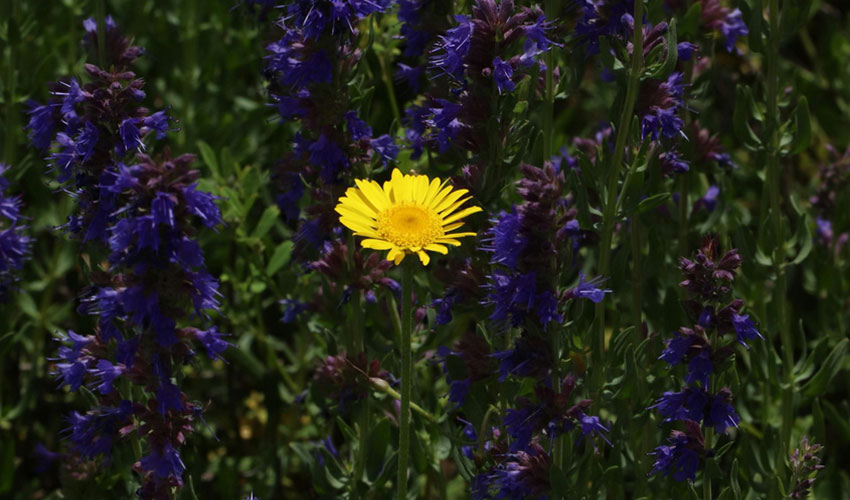
- Hyssop (Hyssopus officinalis): It is used for digestive and intestinal problems including liver and gallbladder conditions, intestinal pain, intestinal gas, colic, and loss of appetite. It is also used for respiratory problems including coughs, the common cold, respiratory infections, sore throat, and asthma.
- Inchplant (Tradescantia zebrine): In the lush landscapes of southeast Mexico, particularly in the vibrant region of Tabasco, the Inchplant has found its place as a cherished botanical marvel. Locally known as Matali, this unique plant is often brewed into a refreshing cold herbal tea, celebrated for its invigorating qualities and soothing flavours. However, while the Inchplant offers delightful benefits, it also harbours a cautionary note. Those who repeatedly come into contact with this extraordinary plant or handle it for extended periods may experience skin irritation. This reaction is primarily attributed to the plant's clear, watery sap, a distinctive feature of T. zebrina that sets it apart from other varieties. Therefore, while embracing the wonders of Matali, it's prudent to handle the Inchplant with care, ensuring that its enchanting properties can be enjoyed without the pesky aftereffects.
- Indian Sandalwood (Santalum album): Sandalwood oil has long been celebrated in traditional medicinal practices for its remarkable healing properties. This aromatic oil, derived from the heartwood of the Sandalwood tree, has been employed in folk medicine to address a myriad of health issues. From alleviating the discomfort of common colds and bronchitis to providing relief for various skin disorders, Sandalwood oil has proven itself a versatile remedy. In addition to its role in treating respiratory ailments, Sandalwood oil plays a significant part in supporting heart health and combating feelings of general weakness and fatigue. Its therapeutic qualities extend to alleviating fevers, tackling urinary tract infections, and soothing inflammation in the mouth and throat. Furthermore, this potent oil is also recognised for its beneficial effects on liver and gallbladder health, aiding in the detoxification processes of the body. In essence, Sandalwood oil embodies a treasure trove of medicinal benefits, offering a natural approach to healing and wellness that has been embraced by generations. Its rich history and multifaceted applications continue to inspire those seeking holistic remedies for a variety of ailments.
- Jamaica Dogwood (Piscidia erythrina / Piscidia piscipula): Jamaica Dogwood has long been regarded in traditional medicine for its potential to alleviate insomnia and reduce anxiety, drawing the attention of herbal practitioners for centuries. However, it is crucial to approach this remedy with caution due to significant safety concerns associated with its use. A pivotal study conducted in 2006 hinted at the promising medicinal properties of Jamaica Dogwood, suggesting it could hold therapeutic potential. Nevertheless, while this research opened the door to further exploration, it also highlighted the need for thorough investigation into its safety and efficacy, urging people to consider the risks before turning to this natural remedy.

- Jasmine (Jasminum officinale): Jasmine, renowned for its exquisite fragrance and delicate blossoms, has gained a prominent place in dermatology, serving both as an antiseptic and an anti-inflammatory agent. Its therapeutic properties extend beyond mere beauty, offering a natural solution for skin care that harnesses the essence of this enchanting flower. As an antiseptic, Jasmine plays a crucial role in protecting the skin from harmful pathogens, helping to prevent infections and promote overall skin health. Its antimicrobial qualities make it an invaluable asset in the treatment of various skin conditions, ensuring that wounds and irritations are kept at bay while fostering a clean and safe environment for healing. Moreover, Jasmine's anti-inflammatory characteristics make it an effective remedy for reducing redness and swelling associated with various skin ailments. It soothes the skin, calming irritation and discomfort while promoting a sense of tranquillity that can be both physically and emotionally beneficial. This dual action not only aids in the physical healing process but also provides a holistic approach to skincare that enhances overall well-being. Incorporating Jasmine into dermatological treatments exemplifies the seamless fusion of nature's gifts with modern healthcare, offering patients gentle yet powerful relief from a myriad of skin issues. Whether used in creams, oils, or other formulations, Jasmine stands out as a remarkable ally in the pursuit of healthy, radiant skin.
- Kanna (Sceletium tortuosum): Kanna is a herb native to southern Africa, has emerged as a promising herbal remedy for alleviating symptoms of depression. Renowned for its potential to mimic the effects of selective serotonin reuptake inhibitors (SSRIs), Kanna intrigues researchers and mental health practitioners alike. While its exact mechanisms of action remain shrouded in mystery, anecdotal evidence and preliminary studies hint at its ability to elevate mood and enhance emotional well-being. This ancient plant, cherished by indigenous cultures for centuries, is now garnering attention as a natural alternative in the quest for effective depression treatments. Whether through its impact on serotonin levels or other neurochemical pathways yet to be fully understood, Kanna offers hope to those seeking relief from the depths of despair.
- Karvy (Strobilanthes callosus): Karvy is renowned for its therapeutic properties, offering a trifecta of health benefits that make it a remarkable natural remedy. With its anti-inflammatory capabilities, Karvy effectively reduces swelling and alleviates pain, providing much-needed relief to those suffering from various inflammatory conditions. In addition to this, its antimicrobial attributes work tirelessly to combat harmful pathogens, promoting overall health by safeguarding the body against infections. Furthermore, Karvy exhibits potent anti-rheumatic properties, making it an invaluable ally in the management of rheumatic diseases. Together, these exceptional qualities position Karvy as a versatile and essential component of holistic wellness.
- Kava (Piper methysticum): For centuries, the plant has been utilised in the South Pacific to prepare a ceremonial beverage known for its sedative and anesthetic effects. It serves as a soporific and is also employed to treat asthma and urinary tract infections.
- Konjac (Amorphophallus konjac): Konjac serves as a vital source of glucomannan, a remarkable dietary fibre renowned for its multifaceted health benefits. This natural ingredient plays a key role in weight management by aiding in weight loss efforts, addressing constipation, and promoting healthy cholesterol levels. Its unique properties make it an invaluable addition to a balanced diet, offering a holistic approach to enhancing overall well-being. By harnessing the power of glucomannan, people can take proactive steps toward achieving their health goals, making Konjac an essential component of modern nutrition.
- Kratom (Mitragyna speciosa): Kratom is recognised for its ability to alleviate or postpone withdrawal symptoms in individuals dependent on opioids, and it is frequently employed to reduce subsequent cravings. Additionally, it serves various other medicinal purposes. Traditionally, Kratom has been used in areas like Malaysia, Thailand, and Indonesia.
- Laurustinus (Viburnum tinus) Laurustinus boasts a variety of medicinal properties that have captured the attention of herbalists and natural health enthusiasts alike. Central to its therapeutic potential are its active compounds, which include viburnin—likely a complex mixture of beneficial substances—and tannins. While tannins have numerous health benefits, they can also lead to gastrointestinal discomfort if consumed in excess. When the leaves of Laurustinus are carefully infused, they reveal their potent antipyretic properties, making them an effective natural remedy for reducing fevers. Meanwhile, the fruits of the plant have traditionally served as powerful purgatives, providing relief from constipation and promoting digestive health. In recent years, the tincture of Laurustinus has garnered significant interest with regards to herbal medicine, as it has shown promise as a remedy for depression. This evolving application highlights the plant's versatility and growing importance in natural healing. Additionally, Laurustinus is rich in iridoid glucosides, a group of compounds known for their anti-inflammatory and antioxidant effects, further enhancing the plant’s reputation as a multifaceted herbal ally.
- Lavender (Lavandula angustifolia): Lavender, with its aromatic charm and vibrant hues, has long been celebrated for its multifaceted roles in history and health. In ancient civilisations, its captivating fragrance was more than a simple indulgence; it served as a potent antiseptic, revered for its ability to cleanse and purify. The ancient Egyptians harnessed Lavender's properties for mummification, believing it to be a sacred agent that aided in the journey to the afterlife. However, as we delve deeper into mental health, the story becomes more nuanced. While Lavender is often touted for its calming effects and is a staple in aromatherapy practices, scientific evidence supporting its efficacy in treating mental health issues remains limited. Many of the claims surrounding its benefits lack robust clinical backing, leading to ongoing debates about its true power in promoting emotional well-being. In essence, Lavender holds a rich tapestry of historical significance and potential uses, yet the quest for a definitive understanding of its impact on mental health continues, inviting both curiosity and cautious exploration.

- Lemon (Citrus limon): For centuries, citruses have played a vital role in the realms of traditional Chinese and Indian medicine, celebrated not just for their vibrant flavours, but also for their remarkable healing properties. Today, the timeless combination of honey and Lemon stands out as a popular remedy, widely recognised for its effectiveness in soothing coughs and alleviating sore throats. This delightful duo harnesses the natural benefits of its ingredients, offering comfort and relief, while their harmonious blend also invites a symphony of tastes that can uplift both body and spirit. Whether sipped as a warm drink on a chilly evening or used as a soothing balm during the cold season, this ancient remedy continues to bridge the gap between tradition and modern wellness, proving that some solutions never go out of style.
- Lemon Balm (Melissa officinalis): Lemon Balm, a fragrant herb from the mint family, has garnered a reputation as a powerful natural remedy, particularly revered for its calming properties and ability to promote restful sleep. Traditionally used in herbal medicine, it is renowned for its efficacy in helping individuals unwind and achieve deep relaxation. When consumed, Lemon Balm works gently to soothe the mind, easing the racing thoughts that often keep us awake at night. Its gentle sedative qualities make it an ideal companion for those seeking tranquillity after a long, hectic day. Furthermore, Lemon Balm is not just a boon for restless spirits; it also serves as a remarkable digestive aid. With its mild antispasmodic properties, this herb assists in alleviating various digestive discomforts, such as bloating, gas, and indigestion. By promoting better digestion, Lemon Balm helps to restore balance and harmony within the body. As it calms the nervous system, it indirectly supports digestive health, illustrating the interconnectedness of mind and body.
- Liquorice Root (Glycyrrhiza glabra): Liquorice Root, revered for centuries in both Eastern and Western medicinal traditions, boasts a rich legacy as a powerful herbal remedy. This remarkable plant has been utilised for an array of health issues, showcasing its versatility and effectiveness. Historically, practitioners have turned to Liquorice Root for its soothing properties, particularly in the treatment of stomach ulcers, where it aids in healing and alleviating discomfort. Additionally, it has been a trusted ally in combatting respiratory ailments like bronchitis, providing relief and support to those struggling with persistent coughs and chest congestion. Moreover, Liquorice Root is renowned for its ability to soothe sore throats, acting as a natural anti-inflammatory that helps reduce pain and irritation. Its healing capabilities extend to supporting the body in fighting off viral infections, including hepatitis, demonstrating its role as a formidable defender of health. With its profound therapeutic benefits and a history steeped in traditional healing practices, Liquorice Root continues to be celebrated as a valuable asset in the field of herbal medicine, inviting a new generation to explore its potential for promoting well-being.
- Lotus (Nelumbo nucifera): Numerous in-vitro and animal studies have delved into the pharmacological properties of the sacred lotus, revealing its potential benefits as an antioxidant, hepatoprotective agent, immunomodulator, anti-infective, hyperlipidemic, and psychopharmacological substance. However, it's important to note that clinical trials to validate these findings in humans are still needed.
- Magnolia-Bark (Magnolia officinalis): Magnolia bark is a remarkable natural resource that harbours a treasure trove of bioactive compounds, prominently featuring magnolol and honokiol. These two potent polyphenols have garnered attention in preclinical research for their wide-ranging therapeutic potential. Investigations have revealed that magnolol and honokiol exhibit impressive antioxidant capabilities, effectively neutralising harmful free radicals that can lead to cellular damage. Furthermore, these compounds demonstrate significant anti-inflammatory effects, helping to mitigate the body's inflammatory responses that are often at the heart of various chronic conditions. In addition to their antioxidant and anti-inflammatory virtues, studies have also highlighted the antitumor properties of magnolol and honokiol. Preclinical evidence suggests that these compounds may inhibit the proliferation of certain cancer cells, offering hope for novel cancer prevention and treatment strategies. Moreover, their antimicrobial attributes indicate that they could play a vital role in combating a range of pathogenic microorganisms, supporting overall health and wellness. Collectively, these findings underscore the potential of Magnolia Bark as a powerful ally in the ongoing quest for natural solutions to some of the most pressing health challenges we face today.

- Mallow (Malva sylvestris): The seeds are utilised internally in a decoction or herbal tea for their soothing and diuretic properties, while the leaves can be prepared into poultices to serve as an emollient for external use.
- Marigold (Calendula officinalis): Commonly known as calendula, this remarkable plant boasts a rich history of traditional healing. Renowned for its potent wound-healing properties, Marigold has been cherished for centuries as a natural remedy for a variety of skin ailments. Its vibrant blossoms not only captivate the eye but have also been employed for their soothing effects on cuts, abrasions, and irritations. This ancient herb continues to be celebrated for its ability to promote skin health and accelerate the healing process, making it a staple in both traditional and modern herbal medicine. With its enduring legacy, Marigold stands as a testament to the power of nature in the realm of skin care.
- Marsh-Mallow (Althaea officinalis): For more than two millennia, Marsh-Mallow has held a revered place in the annals of human history, cherished not only for its culinary versatility but also for its remarkable healing properties. This ancient plant, with its soft, velvety leaves and delicate flowers, has been a staple in kitchens and apothecaries alike. From its origins in the marshes of Europe to its adoption across cultures, Marsh-Mallow has played a dual role as both sustenance and remedy, embodying the timeless relationship between nature and well-being. Its roots dig deep into the earth, mirroring its profound impact on human health and nutrition throughout the ages, making it a testament to the enduring wisdom of herbal traditions that continue to resonate today.
- Milk Thistle (Silybum marianum): For millennia, Milk Thistle has earned its esteemed reputation as a powerful herbal remedy, revered for its myriad medicinal applications, particularly in treating liver-related ailments. This plant has been a cornerstone of traditional medicine across cultures, praised not only for its striking purple flowers and distinctive foliage but also for its potent healing properties. Ancient healers recognised the value of Milk Thistle, harnessing its therapeutic potential to support liver health, promote detoxification, and combat various hepatic disorders. Its legacy continues today, as modern research continues to uncover the profound benefits this timeless herb has to offer in the realm of holistic wellness. Embracing the wisdom of the past, Milk Thistle remains a vital ally in the pursuit of a healthy liver and overall vitality.
- Minnieroot (Ruellia tuberosa): In both folk traditions and the ancient science of Ayurveda, Minnieroot has long held an esteemed place as a versatile remedy. It has been revered for its impressive array of therapeutic benefits, making it a staple in the natural medicine cabinet. This remarkable herb is celebrated for its diuretic properties, effectively promoting healthy urine flow and assisting in the elimination of toxins from the body. Additionally, it has gained recognition for its anti-diabetic effects, helping to regulate blood sugar levels and support overall metabolic health. With regards to pain relief, Minnieroot serves as an analgesic, providing comfort and alleviating discomfort associated with various ailments. Its antipyretic qualities make it a valuable ally in combating fever, enabling the body to restore balance. Furthermore, this potent herb is noted for its antihypertensive effects, offering support to those seeking to manage blood pressure naturally. Beyond these benefits, Minnieroot also boasts gastroprotective properties, promoting digestive health and safeguarding the stomach lining against irritation. In the context of treating infections, it has been employed as a remedy for gonorrhoea, showcasing its historical significance in addressing various health concerns.
- Neem (Azadirachta indica): In India, Neem has earned an esteemed reputation for its remarkable therapeutic properties, serving as a natural remedy for a wide array of ailments, including worms, malaria, rheumatism, and various skin infections. This versatile tree, often referred to as "the village dispensary," highlights its integral role in traditional medicine across rural communities. Its leaves, bark, and seeds are cherished for their healing potential, symbolizing a deep-rooted connection between nature and the health of the people. With a legacy that spans centuries, Neem stands as a testament to the power of indigenous knowledge and the importance of sustainable natural resources in promoting wellness and vitality.
- Nigella or Black-Cumin (Nigella sativa): Black Cumin has emerged as a promising natural remedy, particularly benefitting from its therapeutic properties derived from various forms, including seed oil extract, essential volatile oil, and the isolated compound thymoquinone. In a comprehensive meta-analysis examining multiple clinical trials, researchers found compelling evidence that Nigella sativa delivers significant short-term advantages in regulating blood pressure, notably reducing both systolic and diastolic values. This remarkable discovery underscores the potential of Black Cumin as a valuable ally in cardiovascular health, offering hope for people seeking natural interventions to manage their blood pressure effectively.
- Noni (Morinda citrifolia): Noni fruit boasts a long-standing legacy in traditional medicine, celebrated for its remarkable benefits in alleviating joint pain and addressing various skin conditions. This tropical powerhouse, derived from the Morinda citrifolia tree, has been revered by indigenous cultures for centuries, praised for its potent therapeutic properties. Users have often turned to Noni as a natural remedy, harnessing its rich concentration of vitamins, minerals, and antioxidants to promote joint health, ease discomfort, and support skin rejuvenation. The versatility of Noni fruit makes it a cherished resource in holistic wellness practices, bridging the gap between age-old traditions and modern health needs. Whether it's providing relief to aching joints or soothing skin irritations, Noni fruit continues to be a beacon of nature’s healing potential.
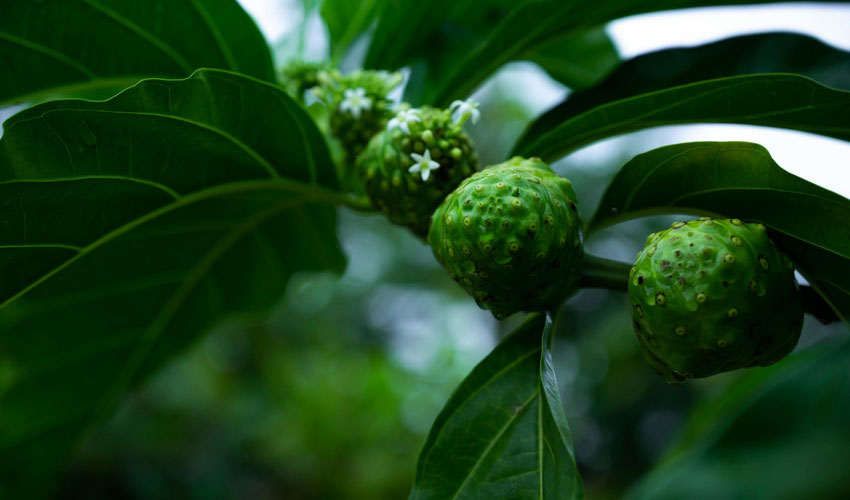
- Oregano (Origanum vulgare): In various regions of Bolivia and other north-western South American countries, folk medicine has employed certain plants as abortifacients, though it's crucial to note that Western scientific studies have found no substantiated evidence supporting their effectiveness for this purpose. Historically, the ancient physician Hippocrates recognised the potential of Oregano, utilising it for its antiseptic properties and its ability to alleviate stomach and respiratory issues. Today, the Cretan variety of Oregano (O. dictamnus) continues to hold a cherished place in Greek traditional medicine, where it is often used as a soothing remedy for sore throats. However, it's important to understand that clinical evidence validating its efficacy in treating such conditions remains absent. This highlights the enduring but often unverified role of herbal medicine in various cultures, blending time-honoured traditions with the ongoing quest for scientific validation.
- Papaya (Carica papaya): Papaya is an excellent source of vitamins A, C, and E, as well as folate, magnesium, and fibre. It contains an enzyme called papain, which aids digestion by breaking down proteins. This makes it beneficial for those with digestive issues or for improving overall digestive health. The vitamins and antioxidants found in Papaya can promote healthy skin. Papaya is often used in skincare products due to its ability to improve skin texture and reduce signs of ageing. With its low calorie and high fibre content, Papaya can be a great addition to a weight loss diet. The fibre helps promote feelings of fullness, reducing overall calorie intake. The fibre, potassium, and vitamins in papaya can contribute to cardiovascular health by helping to maintain healthy blood pressure and cholesterol levels. Papaya has anti-inflammatory compounds that may help reduce inflammation in the body, which is beneficial for conditions like arthritis and inflammatory bowel disease. The antioxidants, especially carotenoids like lutein and zeaxanthin, are important for eye health and may help reduce the risk of age-related macular degeneration.
- Passion Flower (Passiflora): Passion Flower has long been revered for its remarkable potential in promoting mental well-being. Recognised in traditional medicine for its soothing effects, this remarkable botanical is believed to possess natural antidepressant qualities that can uplift the spirit and foster tranquillity. For centuries, communities around the world have harnessed the power of Passion Flower as a gentle remedy to combat the shadows of anxiety and depression. Many have relied on it as a natural sleep aid, finding solace in its ability to calm racing thoughts and ease the mind into a restful slumber. This enchanting flower suggests a harmonious connection between nature and emotional health, offering hope to those seeking relief from the burdens of daily stressors. In exploring the depths of its therapeutic potential, Passion Flower emerges as a beacon of relief amidst the complexities of modern life, providing comfort and a sense of serenity to individuals in need. Whether brewed as a soothing tea or taken as an herbal supplement, its legacy endures. It is a testament to the power of nature in nurturing our emotional and psychological well-being.
- Peppermint (Mentha x piperita): Its oil, from a cross between water mint and spearmint, has a history of medicinal use for a variety of conditions, including nausea, headaches, indigestion, and symptoms of the common cold.
- Plantain (Plantago lanceolata): Plantain, a remarkable herb revered in the world of herbal remedies, has long been celebrated for its versatile applications. Frequently incorporated into herbal teas, this powerful plant demonstrates an impressive array of therapeutic properties. A potent infusion made from its leaves serves as an exceptional remedy for coughs, effectively soothing irritation and promoting respiratory health. In traditional Austrian medicine, the leaves of Plantago lanceolata have been utilised in various forms—whether as a soothing syrup, a comforting tea, or applied externally as fresh leaves. This remarkable plant is a trusted ally in addressing a multitude of ailments, particularly those affecting the respiratory system. Beyond respiratory issues, its healing prowess extends to treating skin conditions, alleviating the discomfort of insect bites, and combating infections. The rich history and therapeutic qualities of Plantain make it a fixture in natural healing traditions, reflecting its enduring value in holistic health practices. As more people seek natural alternatives, this herb stands out not just for its efficacy, but also for its historic legacy in promoting well-being. Whether sipped in a warm cup of tea or applied directly to the skin, Plantain continues to be a beacon of hope and health in herbal medicine.
- Platycodon or Balloon Flower (Platycodon grandiflorus): The extracts and purified platycoside compounds (saponins) from the roots may exhibit neuroprotective, antimicrobial, anti-inflammatory, anti-cancer, anti-allergy, improved insulin resistance, and cholesterol-lowering properties.
- Purple Coneflower (Echinacea purpurea): This plant and other species of Echinacea have been used for at least 400 years by Native Americans to treat infections and wounds, and as a general "cure-all" (panacea). It is currently used for symptoms associated with cold and flu.
- Robert Geranium (Geranium robertianum): In the rich tapestry of traditional herbalism, Robert Geranium stood out as a remarkable botanical ally, revered for its potent healing properties. This versatile plant was highly regarded for its effectiveness in alleviating the excruciating pain of toothaches, offering relief to those who suffered from this common ailment. Moreover, Robert Geranium was not merely a remedy for tooth discomfort; it played a vital role in addressing nosebleeds, providing a natural solution that soothed and healed. This extraordinary herb has long been recognised for its vulnerary qualities, making it a treasured ingredient in ancient healing practices. Its ability to facilitate wound healing was celebrated among herbalists, who utilised it to promote recovery from injuries and cuts. Whether applied topically or used in tinctures, Robert Geranium provided a nurturing force, helping to heal both the body and spirit.
- Rosemary (Rosmarinus officinalis): Rosemary has been used medicinally from ancient times. Rosemary contains compounds like rosmarinic acid, carnosic acid, and other flavonoids that have antioxidant properties, helping to neutralise free radicals and reduce oxidative stress in the body. The compounds found in Rosemary may help reduce inflammation, which is beneficial in managing conditions like arthritis and other inflammatory diseases. Some studies suggest that Rosemary may enhance memory and concentration. The aroma of Rosemary is believed to improve cognitive function and even improve mood and alertness. The herb has been traditionally used to alleviate digestive issues, including indigestion and gas. It may help stimulate bile production, aiding in fat digestion. Rosemary exhibits antimicrobial properties, which may inhibit the growth of certain bacteria and fungi. This can be useful in food preservation and may even support oral health by reducing oral bacteria. Rosemary oil is often used in hair care products for its potential to stimulate hair growth and improve scalp health. It may help prevent dandruff and mild scalp irritations. Topical applications of Rosemary oil may help relieve muscle and joint pain due to its analgesic and anti-inflammatory properties. Some preliminary studies suggest that compounds in Rosemary may have anti-cancer properties, potentially inhibiting the growth of cancer cells. However, more research is needed in this area. Inhaling Rosemary essential oil may help relieve symptoms of respiratory conditions and improve breathing by acting as an expectorant.

- Sage (Salvia officinalis): Sage has shown to improve cognitive function in people with mild to moderate Alzheimer's disease.
- Salae (Broussonetia kurzii): In Thailand, this remarkable species is revered under the name "Salae," celebrated not just for its stunning aesthetics but for its profound medicinal properties. Valued in traditional practices, Salae has secured its place in herbal remedies and wellness treatments, embodying a rich legacy of healing knowledge passed down through generations. Its significance extends beyond mere cultural appreciation; it plays a vital role in the holistic health practices embraced by local communities, highlighting the intricate bond between traditional medicine and nature's offerings.
- Sao Caetano Melon (Cayaponia espelina): Sao Caetano Melon is a remarkable natural remedy renowned for its diuretic properties and its effectiveness in addressing various health conditions. This extraordinary plant not only promotes increased urination, aiding in the elimination of toxins and excess fluids from the body, but it also plays a significant role in the management of diarrhoea, providing much-needed relief to those suffering from digestive disturbances. Furthermore, Sao Caetano Melon has emerged as a potent ally in the battle against syphilis, a complex and often stigmatised disease. Its therapeutic benefits may assist in cleansing and revitalising the body, thereby supporting those on the path to recovery. Embracing the potential of Sao Caetano Melon can lead to enhanced well-being, making it a valuable addition to holistic health practices. Whether as part of a natural treatment regimen or incorporated into everyday wellness routines, this extraordinary plant offers much promise in promoting health and vitality.
- Sea Buckthorn (Hippophae rhamnoides): The leaves of the plant are used as herbal medicine to alleviate cough and fever, pain, and general gastrointestinal disorders as well as to cure dermatologic disorders. Similarly, the fruit juice and oils can be used in the treatment of liver disease, gastrointestinal disorders, chronic wounds or other dermatological disorders.
- Shoreline Purslane (Sesuvium portulacastrum): The plant extract demonstrated strong antibacterial and anti-candida properties, along with noteworthy antifungal activity.
- Small-Leaved Linden (Tilia cordata): Across the landscapes of Central, Southern, and Western Europe, Linden flowers hold a cherished place in the rich tapestry of traditional herbal remedies. Revered for their myriad health benefits, these delicate blossoms are expertly transformed into a soothing herbal infusion known as tisane. This aromatic tea is not just a beverage; it’s a timeless herbal elixir that has been passed down through generations, celebrated for its calming properties and its ability to promote relaxation.
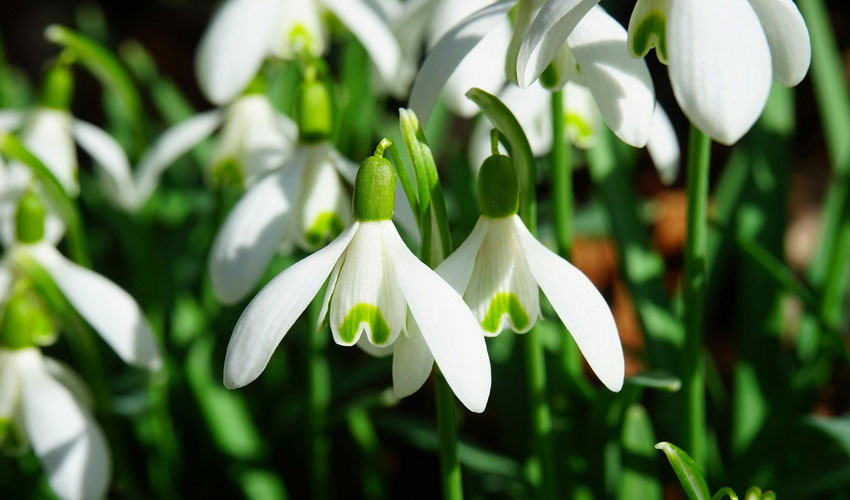
- Snowdrop (Galanthus): Snowdrop, a plant renowned for its delicate beauty, holds a powerful active ingredient known as galantamine. This remarkable compound functions as an acetylcholinesterase inhibitor, a class of drugs that plays a crucial role in managing cognitive decline associated with Alzheimer's disease. While galantamine, also referred to as galanthamine, is not a panacea, it can significantly alleviate some of the symptoms of this devastating condition. By enhancing communication between nerve cells and optimising levels of acetylcholine, galantamine offers a glimmer of hope for individuals grappling with the challenges of Alzheimer's, improving their quality of life and providing a vital support system in their journey.
- Star Anise (Illicium verum): Star Anise is the principal source of shikimic acid, a vital compound used in the pharmaceutical production of oseltamivir, the active ingredient in the widely recognised anti-influenza medication Tamiflu.
- Summer Savory (Satureja hortensis): Its extracts show antibacterial and antifungal effects on several species including some of the antibiotic resistant strains.
- Summer Snowflake (Leucojum aestivum): This plant is recognised for its potent compound, Galantamine, also available under pharmaceutical names such as Nivalin, Razadyne, Razadyne ER, Reminyl, and Lycoremine. Galantamine plays a crucial role in the treatment of mild to moderate Alzheimer's disease, as well as other memory-related impairments, particularly those stemming from vascular issues. Its therapeutic properties make it a vital ally in the fight against cognitive decline.
- Syrian Rue (Peganum harmala): Syrian Rue has emerged as a potential alternative for alleviating depressive symptoms, yet its usage is fraught with considerable risks. This intriguing plant, steeped in both history and controversy, has been employed for centuries in various traditional shamanistic ceremonies throughout the Amazon. It plays a vital role as one of the primary ingredients in Ayahuasca, a profound psychoactive brew that serves as a gateway to spiritual insight and healing. The properties of Syrian Rue extend beyond mere folklore; it is often linked to the alkaloids found in Banisteriopsis caapi, the primary vine used in Ayahuasca. Together, these plants act synergistically, offering potent effects that can lead to profound psychological transformations. However, the exhilarating promise of relief from the shadows of depression comes hand in hand with significant caution. The very compounds that can induce transformative experiences may also provoke adverse reactions or interact dangerously with other medications. Thus, while the allure of Syrian Rue as a natural antidepressant is compelling, it is essential to approach its use with vigilance, respect for its power, and an awareness of the potential pitfalls that accompany its consumption. The journey into the depths of the psyche can unveil profound truths, yet the path is not without its challenges. As such, thorough research and professional guidance are crucial for anyone considering this potent herbal ally in their quest for emotional healing.
- Tea Tree Oil (Melaleuca alternifolia): It has been used medicinally for centuries by Australian Aboriginal people. Modern usage is primarily as an antibacterial or antifungal agent.
- Thyme (Thymus vulgaris): Thyme boasts a long history in the world of herbal medicine, particularly in the treatment of respiratory ailments such as bronchitis and coughs. Its potent properties act as both an antispasmodic and an expectorant, helping to alleviate discomfort while promoting the expulsion of mucus. This dual action not only soothes irritated airways but also aids in the liberation of trapped phlegm, making it a valuable ally in respiratory health. Beyond its application for coughs and bronchitis, Thyme holds a significant place in the medical traditions of Asia and Ayurveda. It has been revered for its diverse therapeutic roles, often harnessed for its anti-inflammatory, antiseptic, and antioxidant properties. However, it is important to note that while Thyme shines in respiratory applications, scientific support for its effectiveness in treating non-respiratory conditions remains limited. Thus, while Thyme is a cherished herb with a rich legacy, its true strength lies within the framework of respiratory support, where it continues to be appreciated for its health benefits.
- Tulsi or Holy Basil (Ocimum tenuiflorum): Tulsa, revered for ages in traditional medicine, serves a multitude of therapeutic purposes. The revered herb takes on various forms—whether enjoyed as a soothing herbal tea, ground into a rich powder, savoured as fresh leaves, or blended harmoniously with ghee. Among its many varieties, Karpoora tulasi stands out, its essential oil being particularly prized for its medicinal qualities. This oil finds its way into a range of herbal cosmetics, enhancing beauty regimens while delivering potent health benefits. Each application celebrates the herb's versatility, showcasing its integral role in promoting wellness and holistic care.
- Turmeric (Curcuma longa): Turmeric, the vibrant yellow spice that is a hallmark of Indian cuisine, particularly in its fragrant curries, has a rich history steeped in traditional medicine. Revered in both Ayurvedic practices and ancient Chinese healing traditions, this golden-hued root has been celebrated for its remarkable health benefits. It is known to promote healthy digestion and improve liver function, making it a valuable ally in holistic wellness. Additionally, Turmeric is often utilised for its natural anti-inflammatory properties, offering relief for those suffering from arthritis pain. Its restorative qualities extend further, supporting women's health by helping to regulate menstrual cycles. This incredible spice, therefore, is not just a culinary delight; it is a potent agent of health and well-being that has stood the test of time across cultures.
- Umckaloabo or South African Geranium (Pelargonium sidoides): It is used in treating acute bronchitis.
- Valerian (Valeriana officinalis): Valerian has a rich history that stretches back to the ancient civilisations of Greece and Rome, where it was revered for its remarkable properties in alleviating sleep disorders and anxiety. This botanical wonder captivated the minds and hearts of early herbalists and physicians, who recognised its soothing effects long before the advent of modern medicine. In those ancient times, the calming roots of Valerian were not just a remedy as they were a source of comfort during turbulent nights and restless days. Scholars and healers alike turned to this natural ally, believing it could usher in peaceful slumber and ease the troubled spirit. As it was incorporated into holistic practices, Valerian's reputation blossomed, positioning it as a staple in herbal apothecaries and a treasured component of wellness routines. Throughout the centuries, its enduring legacy continued to flourish, with countless generations embracing Valerian as an essential tool against insomnia and the anxieties of daily life. Its time-honoured status as a go-to solution for those seeking tranquillity exemplifies the profound connection between humanity and the healing power of nature. Today, as we navigate an increasingly fast-paced world, Valerian remains a beacon of hope for those yearning for restful nights and calmer minds, echoing the wisdom of those ancient civilisations that once turned to its restorative embrace.
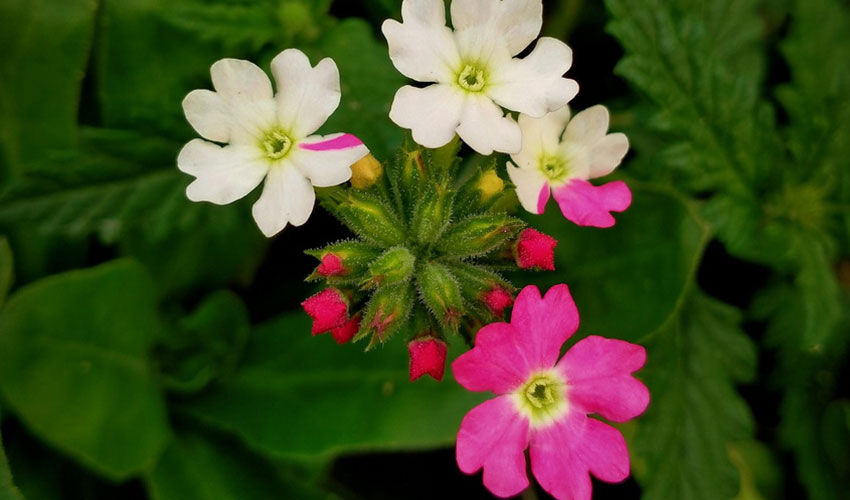
- Verbena (Verbena officinalis): Verbena has long been cherished for its soothing properties, especially when it comes to alleviating discomfort associated with sore throats and respiratory ailments. This herb, renowned for its natural healing potential, acts as a gentle yet effective remedy, providing relief and comfort to those suffering from inflammation and irritation in the throat and respiratory system. Its rich composition of essential oils and beneficial compounds work harmoniously to ease symptoms, making Verbena a favourite choice for those seeking a holistic approach to respiratory wellness.
- Vetiver (Chrysopogon zizanioides): Vetiver, a fragrant grass native to tropical regions, has captured the attention of skincare enthusiasts and experts alike for its remarkable benefits. Revered for its natural healing properties, Vetiver oil is an enduring favourite in beauty regimens across the globe. Not only does this botanical marvel soothe the skin, but it also possesses incredible anti-inflammatory and antiseptic qualities that help combat various skin issues.
- Wafer Ash (Ptelea trifoliate): The root bark of this remarkable plant, commonly referred to as hoptree, plays a vital role in promoting digestive health. Renowned for its beneficial properties, it has been utilised for centuries as a natural remedy to support and enhance the digestive system. With its rich array of compounds, the root bark works harmoniously to soothe discomfort, aid digestion, and ensure overall gastrointestinal well-being.
- Water Germander (Teucrium scordium): Water Germander has long been recognised for its remarkable therapeutic properties, traditionally utilised to address a variety of health concerns. This versatile herb has been employed in the management of asthma, offering relief from respiratory discomfort and promoting easier breathing. Additionally, it has shown efficacy in alleviating diarrhoea, helping to restore digestive balance and comfort. Water Germander is also noted for its ability to combat fevers, assisting the body in its efforts to regain equilibrium. In the realm of parasitic infections, this herb has been valued for its potential to eliminate intestinal parasites, contributing to overall digestive health. Furthermore, it has been historically recommended for the treatment of haemorrhoids, providing soothing relief for this common ailment. Last but not least, Water Germander has been applied topically to aid in the healing of wounds, harnessing its natural properties to support skin regeneration and recovery. With such a diverse array of applications, Water Germander stands out as a powerful ally in the pursuit of wellness.
- Wheatgrass (Triticum aestivum): Wheatgrass may contain antioxidant and anti-inflammatory compounds.
- White Buttercup (Turnera subulata): White Buttercup has garnered attention for its potential therapeutic benefits across a variety of health concerns, particularly those affecting the skin, gastrointestinal system, and respiratory tract. Research conducted in laboratory settings has revealed its remarkable ability to inhibit the growth of several fungal strains, demonstrating its efficacy against notorious pathogens such as Candida glabrata, Aspergillus flavus, A. niger, A. fumigatus, Penicillium chrysogenum, and Candida albicans. These promising findings underscore White Buttercup's potential as a natural remedy, highlighting its role in both traditional and contemporary healing practices. As we continue to explore the depths of this remarkable plant, its multifaceted applications promise to offer relief for those battling fungal infections and various ailments, paving the way for a healthier future.
- White Snakeroot (Ageratina altissima): The root tea has been used to treat diarrhoea, kidney stones, and fever. A root poultice can be used on snakebites.
- White Willow (Salix alba): White willow is a natural source of salicylic acid, similar to the compound found in aspirin. However, it is more likely to cause stomach irritation, whereas aspirin can potentially damage the stomach lining. Historically, white willow has been used for similar purposes as aspirin since ancient times.
- Wild Pansy (Viola tricolor): Among the diverse species of viola plants lies a remarkable treasure: cyclotides. These small peptides, celebrated for their unique size and structural integrity, have emerged as promising candidates in drug development, demonstrating exceptional stability. Notably, many cyclotides sourced from Viola tricolor exhibit cytotoxic properties, offering a potential avenue for cancer treatment. This exciting prospect positions Viola tricolor at the forefront of innovative therapeutic strategies in the fight against cancer.
- Yellow Lady's Slipper: (Cypripedium parviflorum): The Cypripedium species have long been valued in traditional remedies, providing relief for a variety of ailments including dermatitis, toothaches, anxiety, and headaches. Known for their dual nature as both antispasmodics and sedatives, these plants offer a remarkable range of therapeutic benefits. Among them, Cyp. parviflorum and Cyp. acaule stand out as the most sought-after varieties, commonly utilised in soothing topical applications or brewed into calming teas.
- Yerba Mate (Ilex paraguariensis): Research suggests that mate tea boasts a range of remarkable health benefits, largely thanks to its rich concentration of polyphenols. These powerful compounds are said to naturally suppress appetite, boost mental energy and focus, and enhance overall mood. In addition to its polyphenolic properties, Yerba Mate is packed with essential nutrients like potassium, magnesium, and manganese, further contributing to its wellness-enhancing profile.
- Yerba Santa (Eriodictyon crassifolium): The Chumash people, an Indigenous group native to the coastal regions of California, have long relied on the healing properties of Yerba Santa as a vital remedy for respiratory health. This remarkable plant has played an essential role in their traditional practices, serving as a natural means to maintain clear airways and promote proper breathing. With its soothing qualities, Yerba Santa offers a holistic approach to respiratory wellness, harnessing the wisdom of centuries past in a world that increasingly seeks harmony with nature’s gifts. Its significance to the Chumash culture underscores a profound connection to the land and its resources, illustrating a deep understanding of how natural remedies can nurture the body and spirit alike.
''The plants have enough spirit to transform our limited vision.'' – Rosemary Gladstar






















